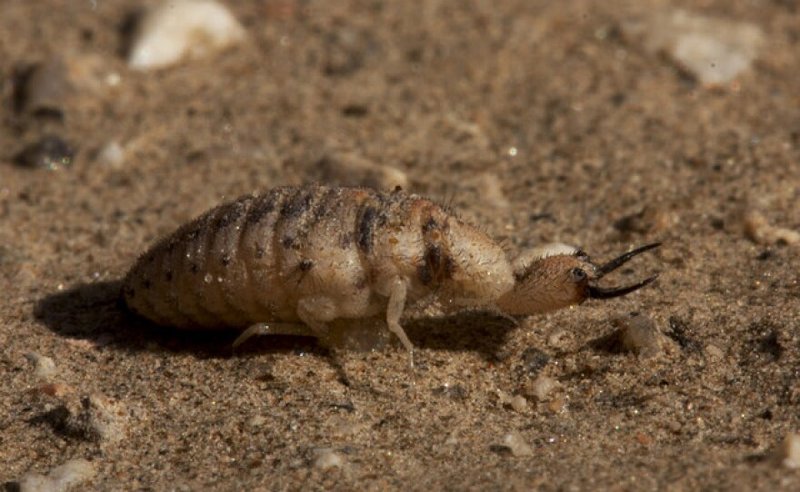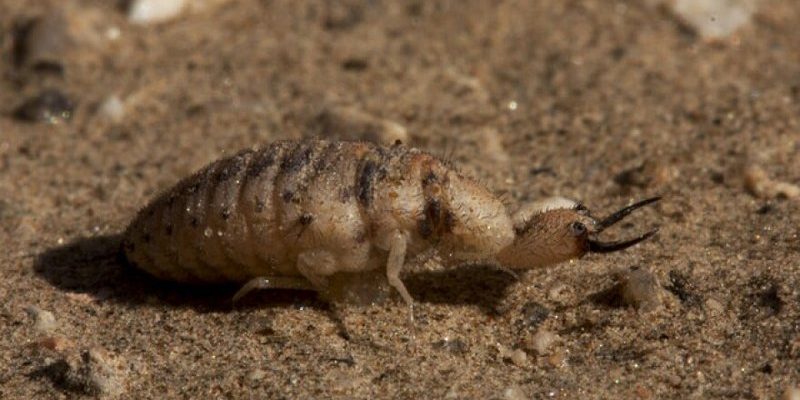
Now, imagine a sandcastle built on a beach. That structure looks beautiful, but when the tide comes in, it washes away. Similarly, ant lion larvae can be affected by both predators and environmental factors that threaten their survival. In this article, we’re going to explore the enemies of these unique larvae, both big and small, and dive into how environmental changes impact their delicate lives. Let’s get started!
Understanding Ant Lion Larvae and Their Role
Ant lion larvae are intriguing little creatures that spend most of their lives underground, waiting patiently for unsuspecting insects to fall into their cleverly constructed traps. These larvae are renowned for their funnel-shaped pits in sandy soil, where they lie in wait, often acting like nature’s very own ambush predators. When an unfortunate ant or other small insect tumbles into the pit, the ant lion strikes, making a meal of its catch.
What’s fascinating is that these larvae can remain in this form for years, undergoing several molts before finally emerging as adult ant lions. The adult stage is less about predation and more about reproduction, with the adults being fragile and delicate, unlike their fearsome larval stage. The larvae, therefore, play a crucial role in controlling insect populations, acting like tiny guardians of their sandy territories.
Who Preys on Ant Lion Larvae?
Just as ant lion larvae hunt other insects, they have their share of predators too. A variety of creatures find them tasty or easy pickings. Here’s a short list of some common predators:
- Birds: Many birds are adept at spotting ant lion larvae, especially when they’re close to the surface.
- Small Mammals: Creatures like shrews and mice may dig them up when searching for food.
- Other Insects: Some predatory beetles and wasps have been known to snack on these larvae as well.
Honestly, it’s a little rough out there for our tiny friends. Since they can’t move quickly to escape danger, they rely on their camouflage and pit traps to survive. However, all it takes is one sharp-eyed bird or a curious rodent to disrupt their quiet life.
Environmental Challenges Facing Ant Lion Larvae
Now let’s shift gears and talk about environmental threats. Like many insects, ant lion larvae are sensitive to changes in their habitat. Here are some significant challenges they may face:
- Habitat Destruction: Urban development, agriculture, and other land-use changes can destroy the sandy areas they need to survive.
- Pollution: Chemicals used in farming can seep into the ground, contaminating the soil and water sources that ant lion larvae depend on.
- Climate Change: Changes in temperature and rainfall patterns affect the ecosystems in which these larvae live, potentially leading to unsuitable living conditions.
Let me explain a bit more about each of these factors. When humans build roads or houses, they often flatten the sandy soil, removing the perfect trap-building location for ant lions. The chemicals in pesticides don’t just keep pests away; they can kill beneficial insects too. And with climate change affecting weather patterns, the conditions that once supported ant lion populations may become unstable and unreliable.
Impact of Soil Quality on Ant Lion Survival
Soil quality is essential for ant lion larvae to thrive. They need loose, sandy soil to dig their traps effectively. Poor soil quality can result from various activities, including:
- Over-Farming: Continuous farming can lead to soil compaction, making it harder for ant lions to create their traps.
- Overgrazing: Livestock grazing can destroy the vegetation that helps maintain soil quality, leading to increased erosion.
- Soil Erosion: If topsoil washes away due to heavy rainfall or human activities, the larvae lose not only their habitat but also essential nutrients.
Imagine a sandcastle again. If the sand is wet and compacted, you can’t build a solid structure. Similarly, if the soil quality declines, ant lions struggle to construct their traps, reducing their chances of catching food.
The Role of Conservation Efforts
Conservation is crucial in protecting not just ant lions but a wealth of biodiversity. Organizations and initiatives aimed at preserving natural habitats play a vital role in ensuring these unique larvae continue to thrive. Here’s how they help:
- Restoration Projects: These aim to return ecosystems to their natural states, which can help restore ant lion habitats.
- Pollution Control: Efforts to reduce pesticide use in agriculture can lead to healthier environments for all insects.
- Education: Raising awareness about the importance of these insects helps garner support for their protection.
Here’s the thing: When we protect the habitats of one species, we often help many others. A healthy ecosystem benefits not just ant lions but also the broader wildlife community that relies on balanced environments.
Ant lion larvae may be small, but they play a significant role in their ecosystems. They control insect populations and contribute to a balanced food web. However, they face numerous threats, from predators to environmental changes that jeopardize their survival.
By understanding these challenges and supporting conservation efforts, we can help safeguard not just these fascinating larvae but the entire ecosystems they inhabit. So, the next time you spot a sandy pit in the ground, remember there might be a clever little ant lion lurking below, just waiting for its next meal. Each step we take to protect the environment helps ensure these tiny predators remain a vital part of nature’s intricate tapestry.

